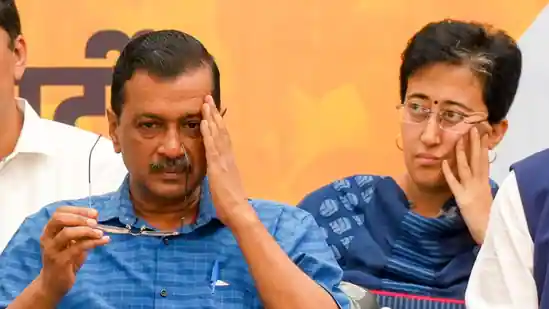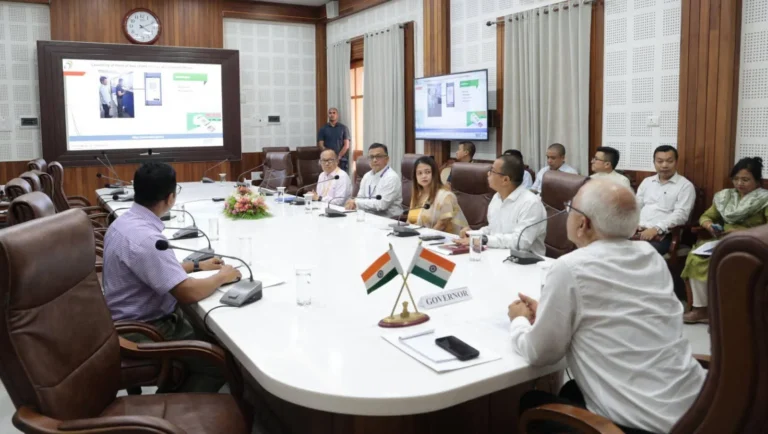Atishi to Succeed Arvind Kejriwal as New Delhi Chief Minister: What This Leadership Change Means for Delhi
Summary of the Article:
Atishi Marlena, a key leader from the Aam Aadmi Party (AAP), is set to succeed Arvind Kejriwal as the Chief Minister of New Delhi. As a trusted advisor and education reformist, Atishi’s rise in the political hierarchy marks a significant transition in leadership, with implications for the governance of Delhi, particularly in areas like education, health, and governance.
In-Depth: Atishi’s Rise as Delhi’s Next Chief Minister – A Leadership Transition That Could Shape Delhi’s Future
Delhi, India’s vibrant and bustling capital, is poised for a major political shift as Atishi Marlena, a prominent figure in the Aam Aadmi Party (AAP), is set to succeed Arvind Kejriwal as Chief Minister. This change in leadership comes at a crucial time for Delhi, a city-state with a growing population and ever-evolving demands in areas like education, healthcare, infrastructure, and public welfare.
But who is Atishi, and what can the citizens of Delhi expect from her as the new head of the state government? Let’s take a deeper dive into Atishi’s journey within the AAP, her contributions to Delhi’s governance, and what this leadership change might mean for the future of the capital.
Who is Atishi Marlena?
For many Delhiites, Atishi needs no introduction. She has been a central figure in AAP since its inception and has been lauded for her extensive work in revolutionizing Delhi’s public education system. With an impressive academic background, including her studies at St. Stephen’s College, Delhi, and a Rhodes Scholarship from Oxford University, Atishi brings a wealth of knowledge and experience to the table.
Her journey with AAP began as a policy advisor to the Delhi government, where she quickly rose through the ranks due to her exceptional work, particularly in the education sector. Atishi’s leadership style is known to be data-driven and policy-oriented, focusing on sustainable and long-term improvements rather than quick fixes. Over the years, she has gained the trust of Arvind Kejriwal and the party’s core leadership, which has now resulted in her being chosen to step into the shoes of the Delhi CM.
Atishi’s Key Achievements in Delhi’s Education System
One cannot talk about Atishi without highlighting her groundbreaking work in Delhi’s public education system. As the key architect behind the AAP’s education reforms, she has completely transformed government schools, which were previously infamous for their lack of quality. The “Delhi Model of Education” is now held up as a shining example of what can be achieved with the right vision and dedication.
Infrastructure and Teacher Training: One of Atishi’s first major initiatives was improving the infrastructure of Delhi’s government schools. She spearheaded the construction of modern classrooms, state-of-the-art labs, and sporting facilities, which elevated the status of these schools from dilapidated to world-class.
Additionally, Atishi emphasized the importance of teacher training. She facilitated international exposure for teachers by sending them to countries like Finland and Singapore to learn innovative teaching methods. This focus on skill development ensured that Delhi’s educators were not only equipped to teach but also to inspire their students.
Curriculum Reforms: Another significant achievement was Atishi’s role in curriculum reforms. She led initiatives such as the introduction of “Happiness Classes” and “Entrepreneurship Mindset Curriculums” to foster a holistic approach to education. These reforms were not just about academic learning but also about nurturing students’ emotional intelligence and entrepreneurial skills, preparing them for real-world challenges.
With such a track record, it’s no surprise that Atishi has been trusted with taking over the reins from Kejriwal. But what does her new role as Chief Minister mean for the citizens of Delhi?
What Can Delhi Expect from Atishi’s Leadership?
As Atishi steps into this crucial role, the biggest question on everyone’s mind is how her governance will compare to that of Arvind Kejriwal. Kejriwal, during his tenure, focused heavily on issues such as free electricity, water supply, healthcare, and transportation. While Atishi will likely maintain many of these policies, her leadership is expected to bring a fresh perspective to several areas of governance.
Education Will Remain a Top Priority: Education is Atishi’s strongest area, and we can expect it to remain a priority under her leadership. There may be further expansions to existing programs, including deeper reforms at the higher education level. With Atishi at the helm, there could also be an increased focus on digital education, something that has become especially important in the post-COVID-19 world.
Strengthening Healthcare Systems: Delhi’s healthcare system has been under pressure, especially during the pandemic. Atishi is expected to take a pragmatic approach to healthcare reforms. With her experience in policy and governance, she could introduce better healthcare infrastructure, improved access to medicines, and stronger emergency response systems.
Focus on Sustainable Development: One area where Atishi could make a significant mark is in promoting sustainable development. Given Delhi’s severe air pollution and environmental challenges, Atishi’s government may focus on greener policies. Initiatives to curb pollution, promote renewable energy, and enhance public transportation systems could become central themes during her tenure.
Inclusive Governance: Atishi’s leadership style is known for being inclusive and participatory. As a leader who values feedback from all sectors of society, she may focus on grassroots movements and public consultations in shaping policy. Expect her to pay close attention to marginalized communities and incorporate their needs into her governance model.
Challenges Ahead for Atishi
While Atishi has proven herself as a capable leader, stepping into the shoes of Arvind Kejriwal will not be without its challenges. Delhi is a city with complex socio-political dynamics, and the pressures of leading such a diverse and often divided constituency are immense.
Managing Delhi’s Infrastructure: Delhi’s infrastructure has been a growing concern, with issues such as traffic congestion, water shortages, and poor waste management coming to the fore. Atishi will need to tackle these issues head-on. She is expected to prioritize long-term infrastructure projects, which might include upgrading roads, improving drainage systems, and promoting sustainable urban development.
Political Opposition: As with any leadership role, Atishi will face political opposition from rival parties, particularly from the Bharatiya Janata Party (BJP) at both the local and national levels. Managing these political battles while ensuring that her governance remains focused on development will be crucial.
Maintaining AAP’s Popularity: Kejriwal’s popularity has played a massive role in the AAP’s dominance in Delhi. As his successor, Atishi will need to work hard to maintain the trust of Delhi’s citizens and keep the party’s momentum going. Building on AAP’s welfare schemes while introducing her unique vision will be key to securing her leadership in the long term.
Conclusion: A New Era for Delhi Politics
Atishi’s rise as the next Chief Minister of Delhi marks the beginning of a new era in the state’s politics. With her proven track record in education reforms, her academic prowess, and her commitment to inclusive governance, Delhiites can expect significant improvements in key sectors such as education, healthcare, and infrastructure.
However, challenges abound, and Atishi’s success will depend on how well she can balance these challenges while staying true to her vision of a progressive, inclusive, and sustainable Delhi.
FAQs
- Who is Atishi Marlena? Atishi Marlena is a prominent leader from the Aam Aadmi Party (AAP) and a key figure in Delhi’s education reforms. She is set to succeed Arvind Kejriwal as the Chief Minister of Delhi.
- What are Atishi’s major contributions to Delhi? Atishi is best known for her role in transforming Delhi’s public education system, including initiatives like Happiness Classes and infrastructure improvements in government schools.
- What challenges will Atishi face as the Chief Minister? Atishi will need to tackle infrastructure issues, environmental concerns, and political opposition while maintaining the AAP’s popularity and pushing forward her vision for Delhi.
- How will Atishi’s leadership impact Delhi’s healthcare system? Atishi is expected to bring a data-driven approach to healthcare reforms, focusing on strengthening Delhi’s medical infrastructure and emergency response systems.
- Will Atishi continue AAP’s welfare programs? Yes, Atishi is likely to maintain AAP’s core welfare policies while introducing new initiatives to address the evolving needs of Delhi’s population.




